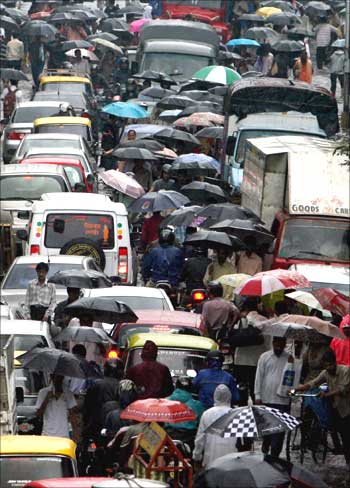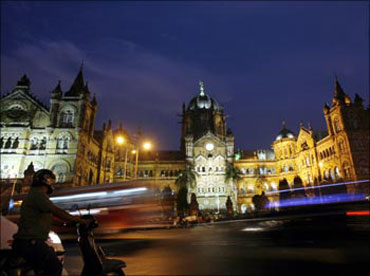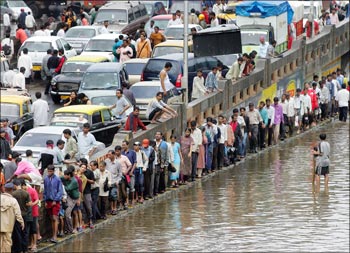 | « Back to article | Print this article |
City planning: People must control public spaces
Some residents of Hyderabad have initiated a campaign to assert their 'right to walk'. The campaign is led by a middle-aged lady who finds it offensive to have to walk past patches where men relieve themselves -- and these in turn will point to the extreme scarcity of public conveniences.
The point is that when public money is spent to improve public thoroughfares, no thought is given to the right of citizens to walk comfortably and safely along those roads.
All too often, carriageways are widened by eating into pavements, placing the needs and demands of those using motorised transport over those of walkers.
A similar public protest movement has gained momentum in Bengaluru, in which the affected residents of particular areas and prominent citizens who empathise with them have banded together to protest against counter-productive road-widening work.
Homes, shops and grand trees are being razed to make way for slightly wider roads, which will do little to relieve the traffic congestion for which the city is now known.
Click NEXT to read on . . .
City planning: People must control public spaces
The citizens' contention is that a contractor-civic official-petty politician nexus is focused on helping itself, unconcerned about what real benefit road-widening projects and flyovers bring to the public, and the damage they cause to public spaces.
They have been emboldened by a concerted citizens' campaign which was able to halt the construction of a war memorial in a prominent park which is currently just a green lung.
The time may have come to formalise the avenues for citizens to express their views. One of the reforms that the national urban renewal mission says civic authorities should put in place in order to quality for central funding is active ward committees, and these should be consulted regularly when formulating an urban agenda.
The NGO Janaagraha has been seeking to mobilise and train Bengaluru citizens to insist on a say in the way their neighbourhoods are run. It is campaigning for a law that will make it mandatory for the civic authorities to consult local residents on their work programme and agenda.
In other words, it is not enough for citizens to simply criticise local government bodies for misdirected urban growth models and the declining quality of urban life. They have to take the initiative, mobilise and make themselves heard so that they get a say in the governing of their cities, and take ownership.
Click NEXT to read on . . .
City planning: People must control public spaces
The best examples of urban renewal in the world indicate that top-down master plans usually do not work.
Cities are best able to change themselves for the better when all their stakeholders gather together, and agree on a common agenda in which they all see value for themselves.
This is as true of Curitiba, which gave itself a bus rapid transit system that has transformed it, as it is of Barcelona which has been able to rejuvenate and revive some of its most distinctive inner-city areas.
On the other hand, a city like Miami has been unwilling to go by the development pattern that 'enlightened' activists and city planners feel is good for it.
Most civic officials will not welcome a more direct people's voice interfering with their plans, so the 'public' will have to wrest control over the public space; it will not be given to them on a platter.



